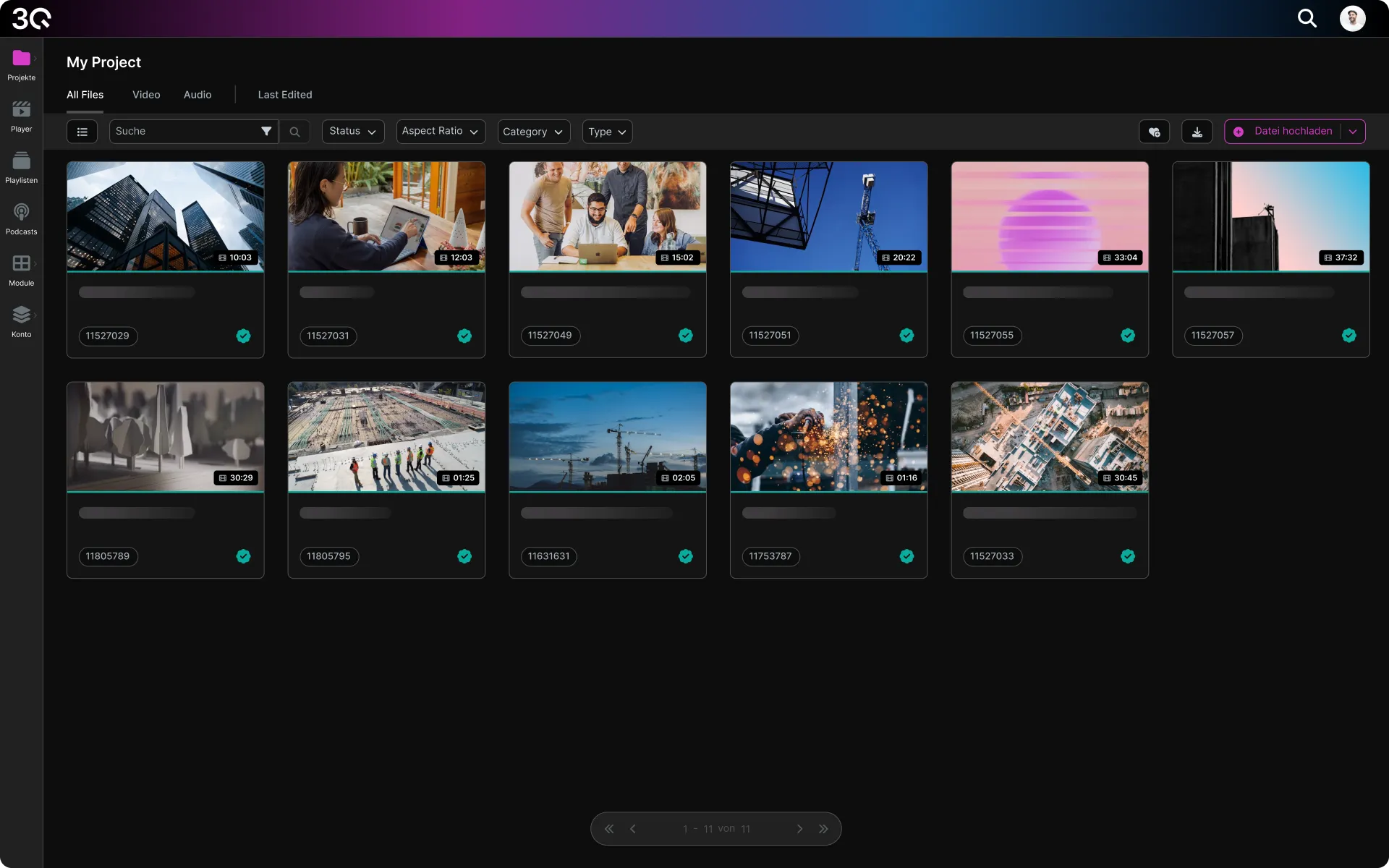European video hosting & streaming for public institutions
The public sector is increasingly faced with the task of providing content in video format so that citizens and employees have easy access to information. At the same time, there are particularly high requirements for data protection, security and accessibility in the public sector.
The 3Q video platform ensures that these requirements are reliably met.

Privacy and security


Accessibility
Made easy to use for you

Innovative video technology made in Europe, for the public sector thought.
Broadcast live and available later — transparent, comprehensible, barrier-free.
Central platform for videos, podcasts, webcasts, and more.
For barrier-free embedding, including live chat, surveys & interaction functions.
automated transcription, subtitling, and deep usage analyses.
You can integrate streams barrier-free via iFrame or JavaScript — also CMP-compatible for privacy-compliant consents.
Define who has access to which data and functions.
Scalable for small projects up to large events.
GDPR-compliant, ISO certified.
German customer support, technical advice, onboarding, monitoring & expert help.
Redundant, location-distributed infrastructure in Europe. Platform & infrastructure developed in-house, without third-party dependencies.
Most frequently asked questions
The short answer is no. Free platforms are financed by advertising, collect user data and are often not GDPR-compliant. For public institutions, this poses significant risks.
Yes. 3Q uses a WCAG-compliant user interface (Web Content Accessibility Guidelines), which enables use by all user groups. This means: clear contrasts, intuitive navigation, logical structuring and keyboard usability. The integrated barrier-free video player goes even further: Subtitles can be easily switched on, audio descriptions can be integrated and multilingual audio options are available. The player controls can be used assistively, e.g. for screen readers.
The platform allows subtitles, transcripts, audio descriptions, and multilingual audio tracks. The video player is developed in accordance with WCAG, so that it can also be operated with screen readers and keyboard navigation.
Yes, you can seamlessly integrate streams and on-demand content on your website or intranet — without data flowing to advertising networks or third countries.
The platform relies on content delivery networks (CDNs) in Europe. As a result, even thousands of viewers can be served simultaneously without sacrificing quality or stability.
Editors can upload, organize, and publish videos without technical hurdles. The interface is clearly structured so that even occasional users can quickly get on with it.